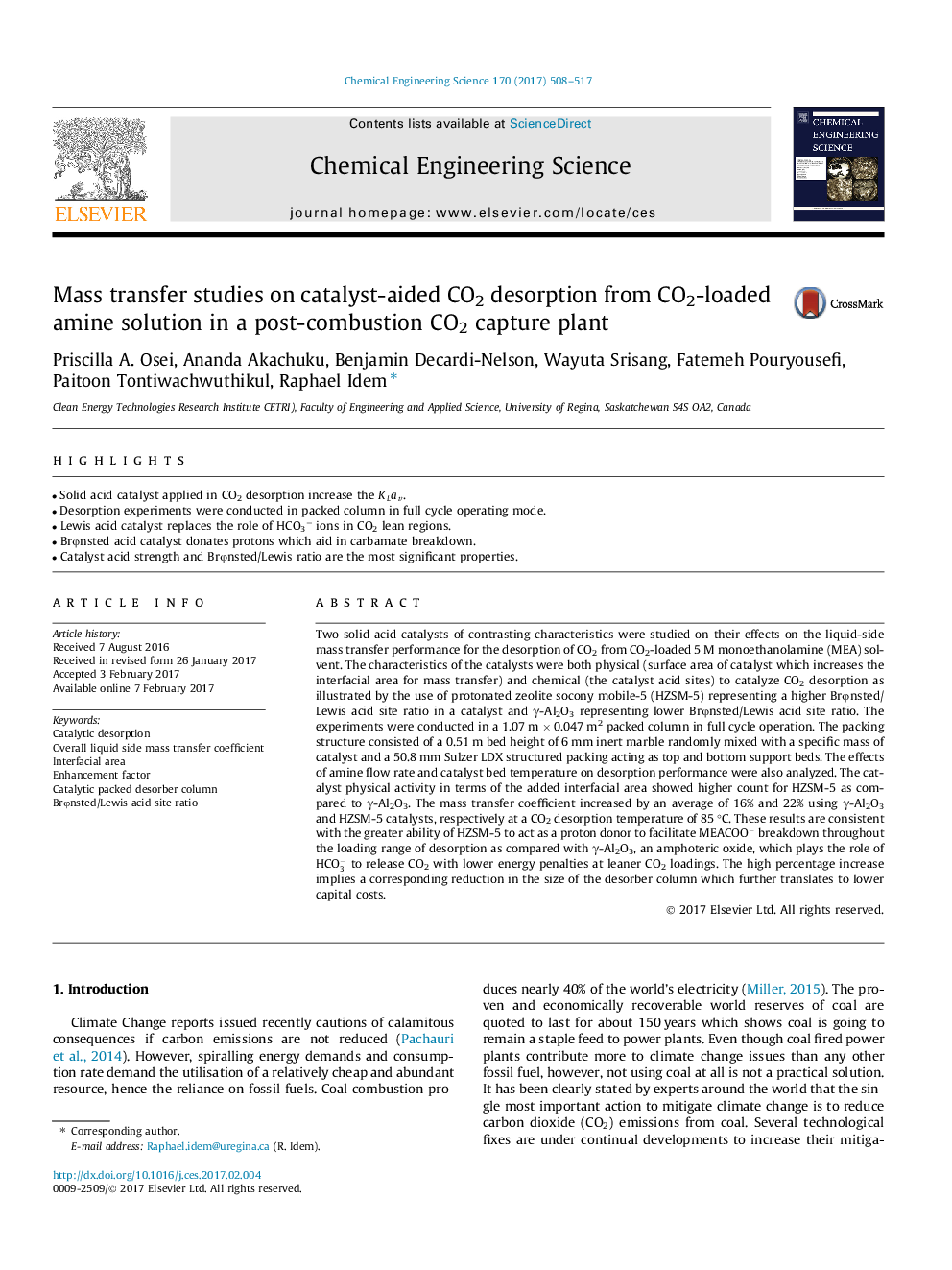| Article ID | Journal | Published Year | Pages | File Type |
|---|---|---|---|---|
| 6467285 | Chemical Engineering Science | 2017 | 10 Pages |
â¢Solid acid catalyst applied in CO2 desorption increase the KLav.â¢Desorption experiments were conducted in packed column in full cycle operating mode.â¢Lewis acid catalyst replaces the role of HCO3â ions in CO2 lean regions.â¢BrÏnsted acid catalyst donates protons which aid in carbamate breakdown.â¢Catalyst acid strength and BrÏnsted/Lewis ratio are the most significant properties.
Two solid acid catalysts of contrasting characteristics were studied on their effects on the liquid-side mass transfer performance for the desorption of CO2 from CO2-loaded 5 M monoethanolamine (MEA) solvent. The characteristics of the catalysts were both physical (surface area of catalyst which increases the interfacial area for mass transfer) and chemical (the catalyst acid sites) to catalyze CO2 desorption as illustrated by the use of protonated zeolite socony mobile-5 (HZSM-5) representing a higher BrÏnsted/Lewis acid site ratio in a catalyst and γ-Al2O3 representing lower BrÏnsted/Lewis acid site ratio. The experiments were conducted in a 1.07 m Ã 0.047 m2 packed column in full cycle operation. The packing structure consisted of a 0.51 m bed height of 6 mm inert marble randomly mixed with a specific mass of catalyst and a 50.8 mm Sulzer LDX structured packing acting as top and bottom support beds. The effects of amine flow rate and catalyst bed temperature on desorption performance were also analyzed. The catalyst physical activity in terms of the added interfacial area showed higher count for HZSM-5 as compared to γ-Al2O3. The mass transfer coefficient increased by an average of 16% and 22% using γ-Al2O3 and HZSM-5 catalysts, respectively at a CO2 desorption temperature of 85 °C. These results are consistent with the greater ability of HZSM-5 to act as a proton donor to facilitate MEACOO- breakdown throughout the loading range of desorption as compared with γ-Al2O3, an amphoteric oxide, which plays the role of HCO3- to release CO2 with lower energy penalties at leaner CO2 loadings. The high percentage increase implies a corresponding reduction in the size of the desorber column which further translates to lower capital costs.
